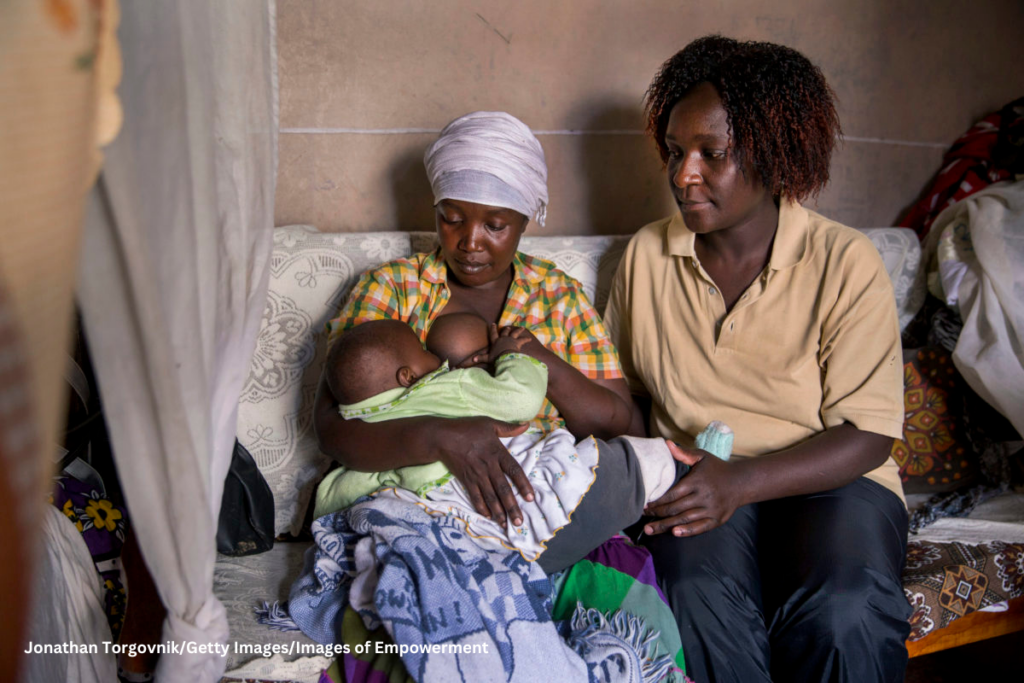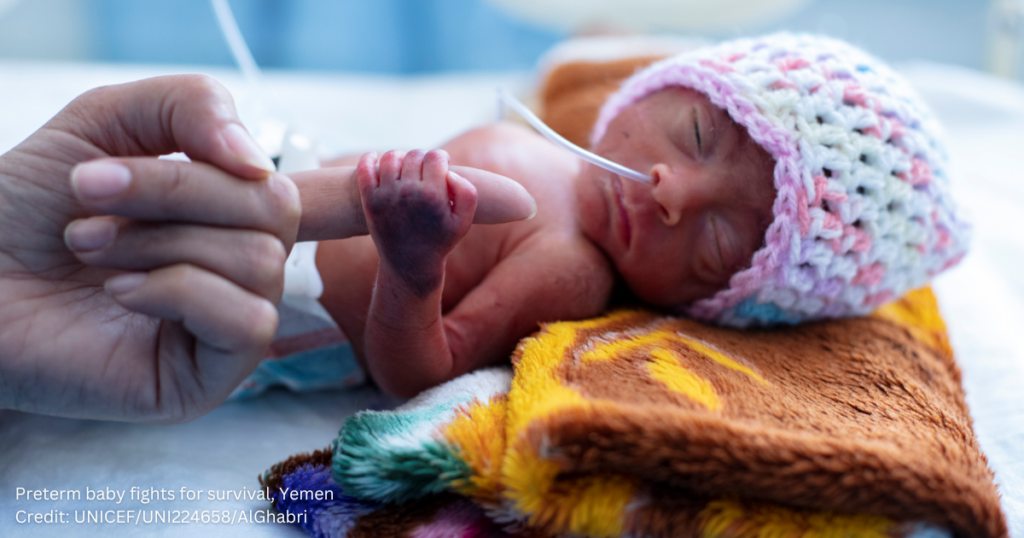Measuring heat-health impacts
We are tracking impacts on pregnant and postpartum women, newborns, and young children.

Heat-health measurements
One task of the HIGH Horizons project is to identify the best ways to measure the relationship between heat and maternal, newborn, and child health.
HIGH Horizons researchers are working to select key public health indicators, statistical measurements that can provide insights into the impact of heat on the health of pregnant and postpartum women, infants, and young children.
Examples of common indicators used across public health include measurements of health status, such as the maternal mortality ratio and the neonatal mortality rate, as well as measurements of risk factors, such as the level of air pollution exposure.

Pregnant and postpartum women, newborns, and young children
Our research explores the relationship between different types of exposure to heat and a variety of possible health outcomes.
We are researching questions such as:
- How many women had premature births during periods of extreme heat?
- How much does an increase in heat affect the number of women in labour requiring caesarean sections?
- In what ways does heat directly affect the incidence of diarrhoea and asthma in children?
Evaluating our work
We will share findings from our research with a World Health Organization Expert Group to assess evidence from different sources and prioritize a list of indicators that countries can adapt to monitor heat impacts near them.
We will also have discussions with health policy makers and program managers in countries to learn more about how well these indicators work for them in terms of the availability of the data, the feasibility of using the data, and the potential of the data for decision-making.
Informing policies and practices
With strong data in hand, policy makers and public health leaders can then use these indicators to inform their work at the global, EU, national, and local level.
Resources
Related Publications
- Brimicombe C, Jackson D, Mung’atia A, Sulaiman Z, Monthaler T, Wieser K, Otto IM; HIGH Horizons Study Group. The influence of heat exposure on birth and neonatal outcomes in Mombasa, Kenya: a pooled time series analysis. The Journal of Climate Change and Health. 2025. 100409. doi:10.1016/j.joclim.2024.100409
- Charvalis G, Koureas M, Brimicombe C, Bogogiannidou C, Kalala F, Mouchtouri V, Hadjichristodoulou C; HIGH Horizons Study Group. Daily time series of 12 human thermal stress indices in Greece, aggregated at commune level (1998–2022). Data in Brief. 2025. doi:10.1016/j.dib.2024.111264
- Lakhoo DP, Brink N, Radebe L, Craig MH, Pham MD, Haghighi MM, Wise A, Solarin I, Luchters S, Maimela G, Chersich MF; Heat-Health Study Group; HIGH Horizons Study Group. A systematic review and meta-analysis of heat exposure impacts on maternal, fetal and neonatal health. Nat Med. 2024. doi: 10.1038/s41591-024-03395-8
- Brimicombe C, Conway F, Portela A, Lakhoo D, Roos N, Gao C, et al. A scoping review on heat indices used to measure the effects of heat on maternal and perinatal health. BMJ Public Health. 2024;2:e000308. doi.org/10.1136/bmjph-2023-000308
- Brink N, Lakhoo DP, Solarin I, et al. Impacts of heat exposure in utero on long-term health and social outcomes: a systematic review. BMC Pregnancy Childbirth. 2024;24(1):344. Published 2024 May 4. doi:10.1186/s12884-024-06512-0
- Brimicombe C, Wieser K, Monthaler T, Jackson D, De Bont J, Chersich MF, Otto IM. Effects of ambient heat exposure on risk of all-cause mortality in children younger than 5 years in Africa: a pooled time-series analysis. The Lancet Planetary Health. 2024. 10.1016/S2542-5196(24)00160-8
- Project Deliverable: Brimicombe C, Wieser K, Otto I, Chersich M, Mpondo F, Roos N, et al. HIGH Horizons – Report on Environmental and Health Databases 1. Zenodo; 2024 Jul.
- Project Deliverable: Brimicombe C, Wieser K, Monthaler T, Otto IM, Part C, Jackson D, et al. HIGH Horizons – Heat-health analysis report from Greek, Italian, Swedish and African data 1. Zenodo; 2024 Jul.
- Project Deliverable: Part C, Brimicombe C, Roos N, HIGH Horizons Study Group. HIGH Horizons – Protocol for population level heat-health impact study in Greece, Italy, Kenya, South Africa and Sweden. Zenodo; 2024.
- Report of a scoping meeting for the selection of indicators to monitor the impact of extreme heat on maternal, newborn and child health, Geneva, Switzerland, 24-25 April 2023. Geneva: World Health Organization; 2024. Licence: CC BY-NC-SA 3.0 IGO

